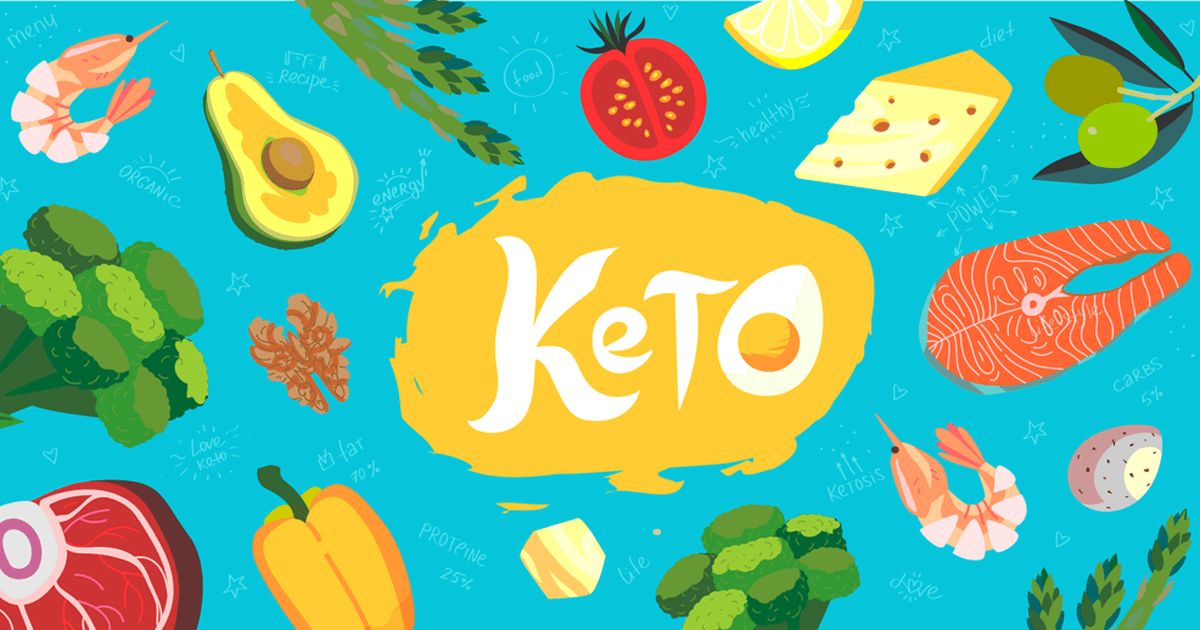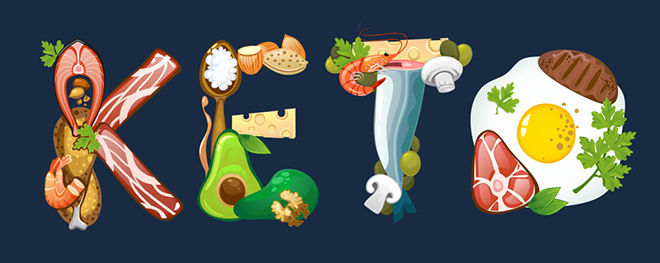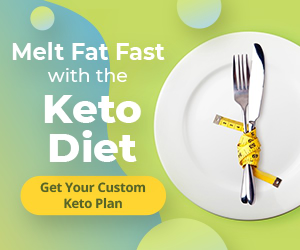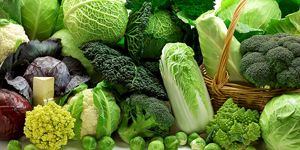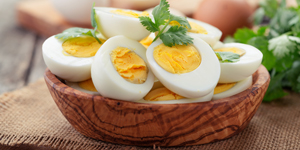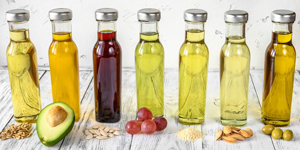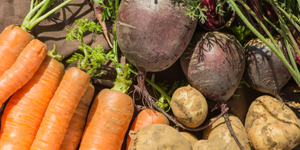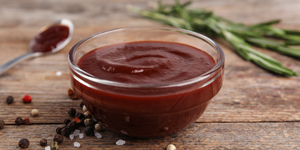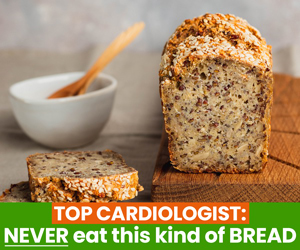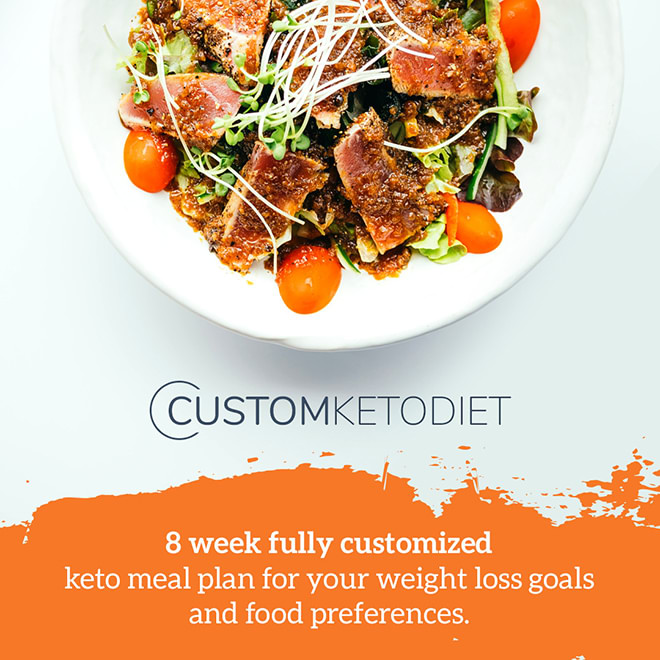Discover what makes keto different to other diets and how it can help you to lose weight by eating and burning fat.
The keto diet has been rising in popularity as a low-carbohydrate diet in recent years, thanks to a surge in celebrities adopting this regimen and its potential health benefits.
Similar to the Atkins diet which drew attention in the early 2000s, keto focuses on restricting your carb intake while focusing on consuming a large amount of fat and protein.
Though, unlike the Atkins diet, the keto diet doesn’t ever allow you to gradually increase the amount of carbs you eat: once you cut them out, they’re removed from the whole eating plan.
We will explore how the keto diet works, what ketosis is and the science behind how it can make the human body turn fat into fuel, how the diet can help epileptic patients relieve seizure symptoms, other health benefits and consider the potential risks.
From there, we’ll then examine the best foods to eat on a keto diet and which foods you should avoid.
Finally, we’ll look at how you can get started, how to stay keto as a home cook, tips for eating out at a restaurant and learn how to maintain the diet once you’re underway.
Let’s get started with your keto journey!
5 Benefits of Keto
Blood Sugar Control
Because of the restriction on foods in the keto diet, people with type 2 diabetes may find some benefit from a keto diet in controlling their blood sugar levels.
Weight Loss
By using fat as fuel, the body delves into unused fat stores, converting them into energy.
As you shed pounds, you’ll find it much easier to maintain and continue to lose weight.
Better Focus
The reduction in glucose in your body means you can improve focus and concentration.
Ketones and fatty acids are a great source of fuel for the brain, too!
Reducing Hunger
People on low-carb ketogenic diets tend to feel less hungry.
Ketosis reduces the levels of ghrelin, the ‘hunger hormone’ that creates the feeling of hunger pangs.
Epilepsy
Developed as a treatment for epilepsy, studies have shown that a keto diet can reduce seizures in epileptic patients, as well as the number of medicines needed.
What is Keto Diet?
How does keto work and how does it make your body burn fat as fuel?
The keto, or ‘ketogenic’, diet is a high-fat and extremely low-carb diet that puts your body in a state called ketosis.
After two-to-seven days, you’ll gain access to fat stores you normally wouldn’t be able to use for fuel, which is then burned to provide you with energy.
The main component of a ketogenic diet is in consuming between 20g-50g of carbohydrates every day while focusing on high-fat and moderate-protein foods.
That means no root vegetables, grains, some fruits and sugars, but yes to foods that fall under the leafy greens, high-fat dairy, meats and healthy oils categories.
Typically, this diet would involve limiting your total daily calorific percentage of the three macronutrients (essential nutrients that help your body to function properly) to 55% to 60% for fat, 30% to 35% for protein and 5% to 10% for carbohydrates.
It all sounds regimented and it’s no surprise that keto diets have been rising in popularity in the last few years, but surprisingly, the diet’s origins actually lie almost a century earlier in scientific research and as a treatment for epilepsy.
Various studies in the 1920s found that low-carb, high-fat diets could be used as a seizure treatment in patients with epilepsy.
But, as medicine progressed through the years, the discovery of new anti-seizure medication eventually led to the decline of popularity in keto.
The diet fell out of fashion for decades, until it was thrust back into the spotlight in the 90s when Hollywood producer Jim Abrahams discussed using the keto diet to help treat his son’s epilepsy on NBC’s Dateline, rekindling scientific interest in the diet.
Since then, there has been a widespread appeal in keto from a lifestyle perspective as it can help with losing weight, providing a steadier supply of energy and reducing hunger, among other benefits.
The Science of Ketosis
We’ve learned where the keto diet comes from, but how does it work in practice?
Our cells use up a lot of energy each day to keep our entire body running.
Normally it fuels itself on glucose (in the form of glycogen), which we get by consuming carbs found in grains, vegetables and fruits.
Glucose is the easiest type of energy for the body to absorb and is the preferred fuel source as it’s the simplest form of sugar.
As glucose is absorbed into our blood, insulin is produced, which helps the body to use up glucose for energy and provide an almost unlimited supply of fat that is stored for later.
But when the body has been starved of carbohydrates and therefore glucose, it runs off of the fatty acid ketone instead.
Produced by the liver, these ketone bodies are made from our fat stores and power our muscles, creating energy to keep us going in the absence of glucose.
This increased level of ketones in our system creates a metabolic state known as ketosis.
With a keto diet, you reduce your intake of carbs to 20g-50g a day so that your body will begin ketosis. This takes around 2 to 7 days (though this rate can vary from person to person).
Your cells’ fuel supply will then switch to run on ketones instead of glucose and as you drop glucose levels, your insulin drops too.
The loss of insulin levels dramatically increases fat burning, making it easier to lose weight.
As you continue on with your keto diet, it will become easier to keep the weight off. At the same time, you might notice a decrease in feelings of hunger while in ketosis.
The increased level of ketones in your body suppresses ghrelin (the hormone that creates hunger pangs, stimulates appetite and promotes fat storage) helping you to control your weight loss program further if that’s your primary goal.
Glossary
Ketosis
The metabolic state the body goes into once it has been deprived of carbohydrates.
Ketones
When glucose levels drop, the liver converts fat into ketones to produce energy for the body.
Glucose
Also known as blood sugar, glucose is converted into energy in our body and comes from the food we eat.
Macronutrients
The nutrients we use in the largest amount.
Carbohydrates, fat and protein are all examples of macronutrients.
Insulin
A hormone made by the pancreas that helps the body to absorb glucose and regulate carbohydrates, fats and proteins.
How to achieve Ketosis
Discover how you can quickly and methodically help your body reach a state of ketosis by following our step-by-step guide.
Reaching ketosis is a crucial part of the keto diet and something that requires a bit of work on your part.
It shouldn’t be too difficult, though, and here we’ll show you the steps you need to take to achieve and maintain ketosis.
1. Reduce Carbohydrates
By removing your carbohydrate intake to 20g-50g a day, you will produce less glucose for the body to absorb and turn into energy.
The depletion of glucose will make your liver create ketone bodies and start your journey towards ketosis.
2. Step Up Your Exercise Regime
When your glucose and glycogen levels are low, your liver will increase its production of ketones.
Working out while already on a keto diet will boost the number of ketones in your body.
3. Eat Healthy Fats
At the same time, you should ensure you are eating good fats and proteins alongside a drastically reduced carbohydrate consumption.
Healthy fats, such as avocado oil and fatty fish, are low in carbs and can increase ketone production.
4. Eat the Right Levels of Protein
Eating an excessive amount of protein can suppress ketosis, while undereating can lead to loss of muscle mass.
Protein is needed for some areas of your body that ketones can’t provide energy for as it is used to make glucose for red blood cells and so on.
5. Test Ketone Levels
By making sure that each macronutrient is proportionally represented in your diet, you should be achieving ketosis quicker.
Tests are available for urine, breath and blood, and these will indicate if you’ve reached ketosis, allowing you to adjust your routine and meals accordingly.
6. Stay on the Diet
By keeping to your meal plans, within two-to-seven days your liver will produce ketones that will start burning fat into energy and put your body into a state of ketosis.
Medical Uses
More than just a method of losing weight, the keto diet has been explored as a potential treatment for other health conditions.
The keto diet began life as a treatment for seizures, but over time other studies have shown its benefits for other health conditions.
By reducing carbohydrate and glucose intake, a keto diet provides greater control over blood sugar and can help a type 2 diabetic with maintaining their glucose levels.
Improvements in cholesterol levels and blood pressures have led researchers to suggest that the keto diet can reduce the risk factors for heart disease.
Similarly, because of the reduced production of insulin in the body, the keto diet could have a key role to play in polycystic ovary syndrome.
Finally, the keto diet is being explored as a treatment option for cancer as it could potentially slow tumor growth.
Good Foods
Now that we know the science of keto, which foods are the perfect fit for the diet?
Green Veggies
Most green vegetables grown above ground are great for the keto diet.
Leafy greens such as kale, spinach and lettuce will be your best bet for keeping carbohydrate consumption low.
Other examples that have relatively low carb counts include avocados, Brussels sprouts, celery, courgettes (zucchini), asparagus, peppers, cucumbers, cabbage and cauliflower.
Berries
Small amounts of blackberries, blueberries strawberries and raspberries are okay for any sweet tooth. Other fruits contain more natural sugars and therefore more carbohydrates.
It may seem weird to cut out so much fruit, but we can actually get more vitamins and nutrients from veggies.
For example, there is more vitamin C in peppers and kale than in an orange!
Nuts
Pecans, Brazils and macadamias are worth getting nutty about as they all contain 5g or less of carbohydrates per 100g while being rich in other useful macronutrients.
Other nuts such as hazelnuts, walnuts, peanuts, almonds and pine nuts provide 10g and under per 100g, which works out at a few handfuls depending on the size of the nut.
Eggs and Meats
With zero carbohydrates per 100g, eggs and most meats are incredibly keto-friendly foods and should be a cornerstone of your ketogenic diet.
Beef, lamb, chicken and pork are all great sources of proteins – but do be careful of bacon that’s been cured with sugar.
Processed meats, sausages and meatballs may also contain added carbs, so always check the label.
Seafood
Not only are fish and shellfish naturally nutritious and full of good fatty omega-3 acids that boost brain and heart health, they also tend to have an abundance of vitamin B12 and iodine too.
Salmon and trout have zero carbohydrates, while other seafood such as mussels, clams, squid, octopus and oysters all have under 5g of carbohydrates per 100g.
Dairy (But Not Milk)
Heavy cream, butter, Greek yogurt and cheese are all generally high in fat and protein, but low in carbohydrates.
Though you should keep in mind that not all dairy products are equally high in fat.
If the milk produce has been fermented with bacteria, then it will be lower in carbohydrates as lactose (the sugar) will have been fermented into lactic acids.
Oils and Sauces
Any oils with thousands of years of history and minimal processing (such as pure olive oil, coconut oil, avocado oil, sesame oil and so on) are great for ketogenic diets.
Most sauces are okay, too, as long as they’re not sugary, for example mustard, vinaigrette (made without any sweet ingredients), Hollandaise, aioli, salsa, soy sauce, guacamole and pesto.
Drinks
Water is essential no matter what diet you’re on as it naturally hydrates our bodies.
Unsweetened coffee and tea with heavy cream instead of milk is a great choice if you need a morning caffeine boost, too.
Other diets may restrict alcohol consumption, but dry white and red wine don’t have that many carbohydrates in and can be drunk in a keto diet in moderation.
Foods to Avoid
A keto diet is not as simple as only eating fruits and vegetables, as some fresh produce are naturally higher in carbs.
Grains
Cereals, bread, pasta, rice and any food made from a grain are not beneficial for a keto diet as they are very high in carbohydrates and are very starchy.
Beer surprisingly falls into this category too as it is brewed from cereal grains, though keto versions are available.
Root Vegetables and Tubers
If it’s a vegetable that grows below ground, then the general rule of thumb is to avoid it in the keto diet.
So this means no potatoes, sweet potatoes, carrots, parsnips and so on. Again, these vegetables are very starchy and very high in carbohydrates.
Most Fruits
Did you know that just one banana provides you with enough carbohydrates for your daily keto limit?
Other fruits contain a lot of natural sugar, which should be avoided in the keto diet. However, a small handful of berries are typically okay if moderated with the rest of your meal plan.
Sugary Food & Drinks
You’ll have to forego your favorite chocolate, cakes and soda in the keto diet to stay on track. As they are intensely sweet and full of sugar, they should be best avoided.
Although diet sodas don’t contain any sugar, they should be avoided too as they maintain your sweet cravings.
Milk
Though not seemingly sweet, milk has about 15g of carbohydrates in a single glass.
That means adding a splash into your hot drinks can quickly add up, especially in a heavily milk-based pick-me-up like a latte.
Consider using heavy cream instead if you need a creamy taste in your coffee or tea.
‘Light’ Foods
Always check the label of what you’re buying as some foods marketed as ‘light’, such as light yogurts for example, contain the same amount of sugar as a non-light version.
Sometimes the amount of sugar could be almost as high as a fruity yogurt – and we know we should avoid most fruits in the keto diet.
Sweet Condiments & Processed Oils
Some condiments such as ketchup, BBQ sauce, jams and chutneys contain a very high level of sugars.
Jam contains as much as 69g of carbohydrates per 100g, for example!
Vegetable oil and sunflower oil are not recommended for a keto diet either, as are any processed foods cooking using these oils.
Legumes
Beans and chickpeas all fall under the legume category and are fairly high in carbohydrates, so those on keto diets should avoid eating large quantities of them.
They do provide some good nutrients such as iron, however, so a small amount might be okay depending on the rest of the foods that you have consumed on the day.
Knowing the Risks
There are some potentially negative long-term effects, as well as groups of people that shouldn’t start the keto diet at all…
The keto diet is safe for most but those that are pregnant and or breastfeeding, and people with high blood pressure, should all take extra care and consult a doctor before starting the keto diet.
Always seek medical advice from a professional.
For anyone with high blood pressure, you should be mindful that the general advice of consuming more salt and water in the form of bouillon or broth in the first week of the diet may not be the best treatment for dehydration as it will increase blood pressure.
Also, if you’re also already on blood pressure medication while starting the keto diet, there’s the chance that the diet will lower your blood pressure to a level that may make you feel dizzy and weak, in which case you should contact your doctor to discuss if the medication you are currently taking is right for you while on the diet.
Anyone breastfeeding should not be on a low-carb diet at all. Breastfeeding on a low-carb intake can lead to ketoacidosis, which can be life-threatening.
It should be noted that ketoacidosis is not the same as ketosis, and is where blood acidity is increased.
Additionally, getting the body to change its energy source to run on fats may not be safe for those who are pregnant.
A study of pregnant mice on a keto diet found that the offspring had slower growth, organ dysfunctions, smaller hearts and brains as well as enlarged spines.
There haven’t been any studies on pregnant humans, understandably, to see if these effects are the same for our species.
The keto diet has also been associated with causing dysmenorrhea, or painful period cramps too.
While the ketogenic diet is helpful for diabetics to control their blood sugar, without careful administration they could also suffer from severe hypoglycemia.
Any diabetics with type 2 diabetes and using sodium-glucose cotransporter 2 (SGLT2) inhibitors should also avoid the diet.
You should also be wary that a high-fat, high-protein diet can cause problems in people with existing liver and kidney conditions.
As the keto diet can put extra stress on the kidney, it could also lead to the formation of kidney stones.
A high level of red meat consumption may also increase the risk of cancer.
And though you can eat steak, bacon and butter on the diet, regular consumption could lead to an increased risk for heart disease and high cholesterol without the guidance of a doctor.
What Are the Side Effects?
Both positive and negative changes to your body will happen in the first few days of starting the keto diet.
As the body has to switch its metabolic state into ketosis, there can be some short-term side effects while it gets used to using fat as fuel.
Some of these symptoms can include headache, tiredness, difficulty focusing, lack of motivation, irritability, sugar cravings, cramping, general weakness, dehydration, excess urination, muscle fatigue, diarrhea, discomfort, dizziness and heart palpitations.
Known as the ‘keto flu’, these effects are caused by loss of water retention from a carb-filled diet.
Because the levels of carbohydrates and insulin have drastically dropped, the body excretes more sodium and water in urine – causing dehydration and some of the other effects.
Some other symptoms include bad (or fruity) breath, which is also an indication that your body is in ketosis.
This is because a ketone body, acetone, is trying to escape via your exhalations and may make your breath smell fruity or similar to the smell of nail polish remover.
This smell can also be present in sweat if someone is working out in the first few days of the keto diet.
These side effects will dissipate after a few days, and up to a week or so of starting the diet.
On the positive side, as water retention is lost, you will drastically lose weight in the early stages of being on the keto diet, which is a somewhat beneficial side effect for those with weight-loss goals.
Some people also experience reduced hunger pangs and an increase of energy once they are able to focus again as the negative keto flu symptoms disappear.
How to Minimize Side Effects
There are several ways to reduce the negative effects that come from the first week of a keto diet.
Everyone is affected differently by ketosis. Some experience more intense effects, while others may feel hardly any differences at all.
There are different methods that can decrease symptoms if you do find yourself experiencing them.
Rather than cutting carbs cold turkey, you could gradually reduce carbohydrate intake to 20g-50g over several weeks to help the body get more used to the change, though this would also mean slower progress.
An increased consumption of salts and water will help too, and drinking a cup or two of broth or bouillon is a great method for immediately alleviating headache, nausea and dizziness symptoms.
As a rule of thumb, drinking more water will also relieve symptoms.
This can be a combination of water, broth, coffee and teas but do be careful with caffeinated drinks, as they can dehydrate you if you consume too many cups and will reverse the hard work you’ve put into alleviating symptoms.
Increasing your fat intake in the first week will make the body feel satiated for longer, too, while you reduce carbs and will make you feel less hungry after a meal.
Once the side effects settle down, you can look at decreasing fat back to 55%-65% of your calorific total daily.
If you do find yourself unable to function properly for a couple of days, it may make sense to reduce your exercise routine or even stop it completely while your body properly adjusts to burning fat for fuel.
Getting Started
Now that we know what makes a good keto ingredient, where do we begin with the diet?
Home Meals
The best way to get started is to create a meal plan for a week.
Having a routine in place helps you to stick to the diet, and avoid going off course.
Design each meal around keto-friendly foods and avoiding heavily processed foods (which tend to be carb-heavy anyway), so that you are eating nutritious foods and are fully prepared when it comes to mealtime.
This will keep you on track and also help you with your grocery shopping too.
Learn some easy midweek staple keto meals that will keep you going and know the ingredients that go into them inside and out.
It might even help to create some keto versions of your favorite foods, like courgetti and meatballs instead of spaghetti and meatballs.
You can adapt as you go, too, adding in new recipes and bringing back old favorites along the way to keep your weekly meal plans interesting.
Starting a diet plan or recipe book can help you with planning meals ahead of time.
Eating Out
Heading out for dinner doesn’t have to be a chore on a keto diet, though planning ahead will save any headaches at the restaurant.
Most places will have their menus available to view online nowadays, so you can have a look ahead of time to find keto-friendly options in advance.
A lot of restaurants will be happy to customize your order, too, should you not find any suitable default menu options.
For side orders, consider substituting carbohydrates like fries with a side salad.
If the eatery doesn’t allow substitutions, simply ask for the starchy carbohydrate to be removed, for example when ordering a burger you can ask for it to arrive without the bun.
If you are really stuck for main options, try to use a combination of side dishes to your advantage.
Just remember to avoid dessert and to be careful of sugary drinks like sweet wines and sodas, and avoid condiments like ketchup and BBQ sauce.
A simple substitution can turn a carb-heavy meal into a keto-friendly alternative.
5 Rules of Keto
1) Stick to the Right Amounts
Keep your carb intake to between 20g-50g, and your calorific breakdown equates to 55% to 60% for fat, 30% to 35% for protein and 5% to 10% carbohydrates.
2) Eat the Right Foods
High fat and protein are allowed, while anything carby, starchy, with a lot of sugar or grains should be avoided.
3) Plan Your Meals
Maintain your diet by planning a grocery list of keto-friendly foods and organize your meals ahead of time.
4) Drink Water
Staying hydrated is essential for the first week of the keto diet, but is generally a good rule of thumb to live by no matter the diet.
5) Prepare for Keto Flu
By making sure you have ways of alleviating the side effects from keto flu, you’ll achieve ketosis easier and happier.
Keeping it up!
There are a lot of things you can do to maintain your keto diet no matter what life throws at you.
You’re well underway and a few weeks along into a ketogenic diet, so now what?
The best thing you can do is to keep meal planning and stick to it, ensuring that the only foods within your grasp are all keto-friendly so you are never tempted to stray off course.
You can do this by either throwing or giving away all of your carby foods, or by putting them in hard-to-reach places.
Beating your cravings may be hard – especially if you have a sweet tooth. But you can keep those cravings at bay by making keto-friendly versions of the food you love, or by delaying your craving with a keto meal first to keep you satisfied.
Eating a keto snack ahead of a social event can remove the temptation to pick at carby foods.
It can also be tough being keto while managing life and social events where you’ll ultimately be faced with food and drink-related challenges.
If you go to a friend’s or family member’s home for dinner, it might be wise to communicate ahead of time so the host can prepare options for you.
It may even make sense to have a high-fat snack that will keep you full before you leave so that you will be less tempted by carby entrees.
However, it is ultimately down to how strict your meal plans are, and if you’re happy with being a bit loose with your intake while you’re out.
Finally, why not join a keto community on social media? Keto groups are great for recipe inspiration and connecting with like-minded people, keeping you motivated to carry on with your diet.
 Expert eBooks Courses | Online-eBook-Download.com Latest digital books and courses, Tips & Tricks, How-to guides, free ebooks, software discounts, coupons & much MORE… Instant Download
Expert eBooks Courses | Online-eBook-Download.com Latest digital books and courses, Tips & Tricks, How-to guides, free ebooks, software discounts, coupons & much MORE… Instant Download

